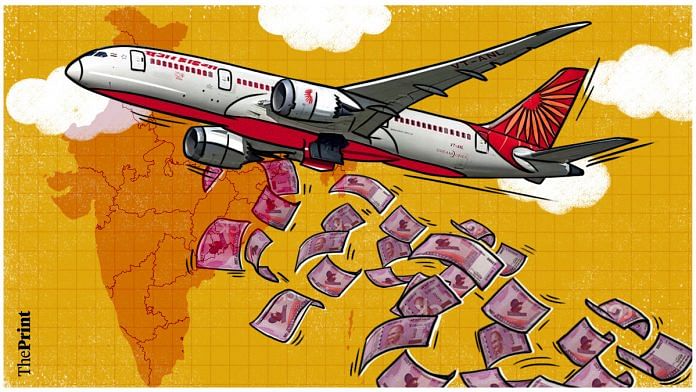Two announcements of the past few days grabbed attention. One was the Tata-owned Air India’s eye-popping order for 470 passenger planes, with options on another 370. The combined total of 840 is more than today’s all-airline fleet of 700 aircraft, flying as well as grounded. The second announcement was an investment commitment of about ~3.5 trillion by various business houses, led by Mukesh Ambani, Kumar Mangalam Birla and Tata, for a single state (Uttar Pradesh).
Such announcements prompt the question: What degree of dominance, if any, do India’s biggest business groups enjoy? Put another way, how much of the country’s ambitions are pegged to the success of these groups? By one tally, Gautam Adani’s companies run “some of India’s biggest ports…, warehouse 30 per cent of its grain, operate a fifth of its power transmission lines, accommodate a quarter of its commercial air traffic, and produce perhaps a fifth of its cement. A Singaporean joint venture views to be India’s largest food company …”
That list does not include solar panels, power generation, green hydrogen, highways, copper, coal mines, petrochemicals, a data centre, and cloud services — all mentioned a few months ago by the group’s chief financial officer (CFO), who listed projects totalling $ 120-140 billion (~9.6-11.2 trillion). The group aimed at a trillion-dollar valuation which, the CFO pointed out, had been achieved by only a handful of companies, like Apple and Saudi Aramco. All this was pre-Hindenburg, which has served to underline the striking contrapuntal: The group’s net profit in calendar 2022 was all of $2.9 billion (~23,000 crore).
The far more profitable Tata group’s chairman, N. Chandrasekaran, recently mentioned investment plans totalling $90 billion (~7.2 trillion) for the next five years. That’s almost modest when compared to Adani, and also Mr Ambani’s various pronouncements, which posit investments of about ~10 trillion. The latter’s ambitions include producing a fifth of the country’s renewable energy — for which his Reliance has sought 450,000 acres from Gujarat. That is more than the territory of Delhi state.
Not in the same league as the Big Three is Anil Agarwal’s Vedanta, with interests in metals, optical fibre, and energy. The group reports more profits than Adani, yet plans to grow the group from $30 billion to a relatively modest $75 billion in four or five years, with investments totalling $20 billion (~1.6 trillion). Vedanta is notable also for hoping to match state-owned ONGC as a producer of oil and gas, and for wanting to set up electronics display units as well as a semi-conductor plant, for which it has tied up with Foxconn.
Then there are others, like the Aditya Birla group, a leading player in cement, metals, textiles, fertiliser, tyres, etc. Its profits are well in excess of Adani’s, but it is circumspect about big announcements. Sajjan Jindal’s JSW, a $22-billion group with interests in steel, energy, cement, infrastructure, paints, and venture capital, is another investment champion. Typically, the group intends to treble its cement capacity and multiply six-fold its ports and terminals capacity.
The ~30-trillion investment mentioned by just the Big Three equals a tenth of India’s GDP, and are variously postulated to take place over four to 10 years. They account for 20 per cent of the net profits of 3,250 out of India’s listed, non-financial companies; the second set of three groups accounts for another nearly 10 per cent. The six, taken together, may well account for a third or more of new investments by the private corporate sector.
All the planned investments may not materialise, judging by the past experience of businessmen with outsize ambitions: Anil Ambani, the Ruia brothers of Essar, the erstwhile champions from Andhra Pradesh (GMR, GVK and Lanco), etc. These and others had powered the debt-driven investment rush of the Manmohan Singh years, which ended badly. Of today’s lot, Adani is manifestly a case of overweening ambition. The other “national champions” seem better funded.
Perhaps the increasing concentration of mega investments is because of their capital-intensive nature and the scale of the country’s ambitions. Still, the rise of multi-business conglomerates stands in contrast to the earlier rise of focussed, single-business enterprises in telecom, IT services, pharmaceuticals, and automobiles. Group strength can help them squeeze rivals or buy them out. There is evidence for both. And as the experience of South Korea, Japan, and Russia has shown, the conglomerate model often comes with political connections. But such comparisons can be overblown. The six big groups have revenue equal to about 11 per cent of India’s GDP. Samsung alone accounts for more than that in South Korea.
By special arrangement with Business Standard
Also read: Buddhism did not spread by the sword. But the empires that helped it grow did



